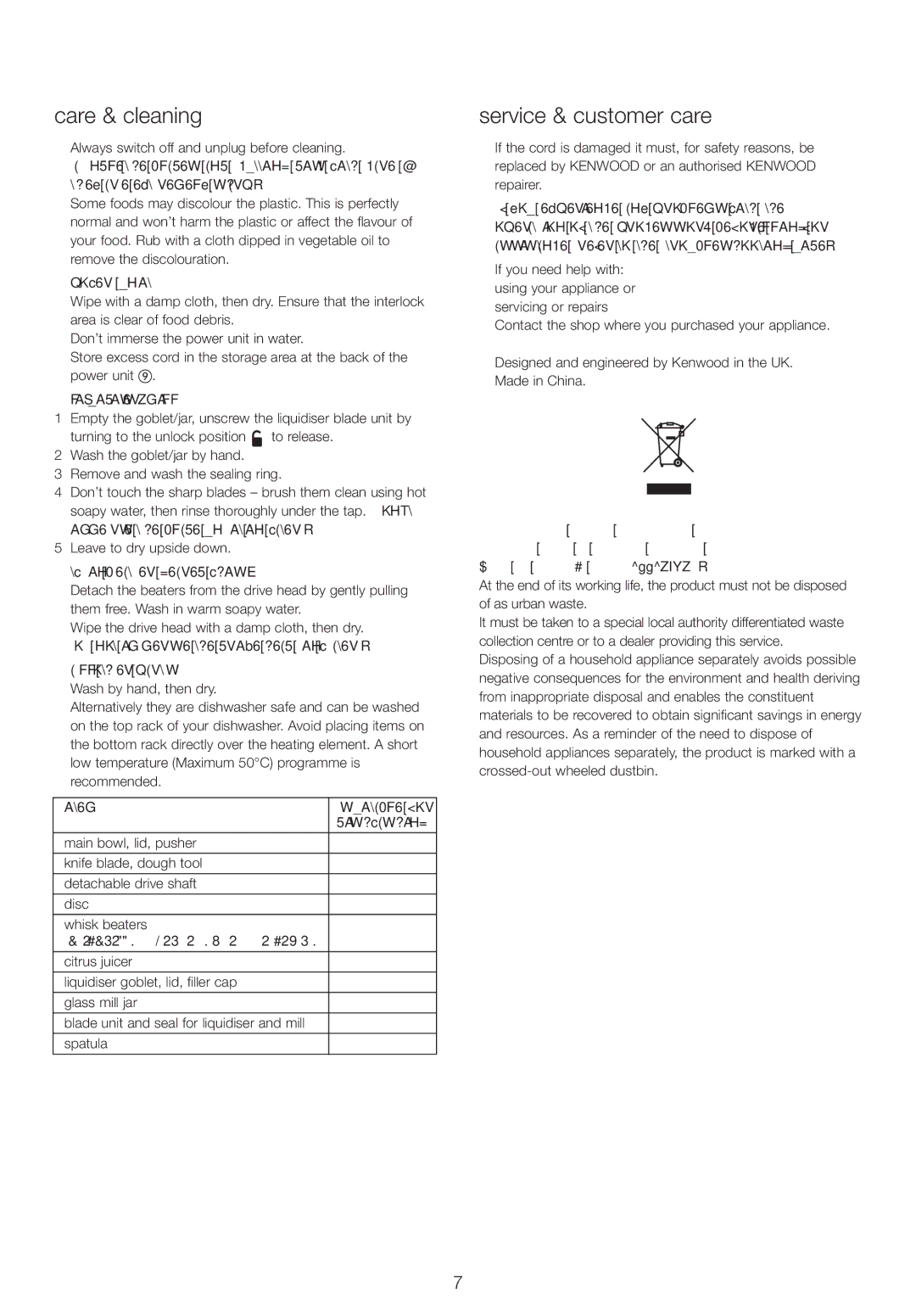FPM25 specifications
The Kenwood FPM25 is a versatile food processor designed to simplify various culinary tasks in the kitchen. This compact yet powerful appliance is perfect for home cooks looking to save time and effort when preparing meals. With a sleek and modern design, the FPM25 not only looks good on your countertop but is also packed with features that make food preparation more efficient.One of the standout features of the Kenwood FPM25 is its 1000-watt motor. This robust motor provides ample power to handle a variety of tasks, from chopping vegetables to kneading dough. The dual speed and pulse settings allow users to have precise control over the consistency of their ingredients, making it ideal for both delicate and robust preparations.
The FPM25 comes equipped with a 3-liter bowl, providing enough capacity for large batches of food. The bowl is made from high-quality materials, ensuring durability and longevity. Additionally, the processor includes a wide feed chute, allowing for the easy addition of whole ingredients without the need for pre-chopping.
Versatility is a key characteristic of the FPM25. It features a comprehensive set of attachments, including a stainless steel chopping blade, a dough tool, and various slicing and grating discs. These attachments enable users to perform a multitude of tasks, such as slicing vegetables, grating cheese, and mixing dough with ease. The ability to quickly switch between these accessories means that meal prep can be completed in a fraction of the time compared to traditional methods.
Safety is also prioritized in the design of the Kenwood FPM25. The processor is equipped with a safety lock system that prevents operation unless the bowl and lid are securely locked in place. This feature ensures that users can operate the appliance without any risk of accidents.
In addition to its powerful performance and safety features, the Kenwood FPM25 is designed with ease of cleaning in mind. Most parts are dishwasher safe, allowing for a quick and hassle-free cleanup after use. The compact size of the processor makes it easy to store, even in smaller kitchens.
In conclusion, the Kenwood FPM25 food processor is a well-rounded kitchen appliance that combines power, versatility, and safety. Whether you're a seasoned chef or a beginner in the kitchen, the FPM25 offers the tools and features necessary to enhance your cooking experience and make meal preparation easier than ever.

